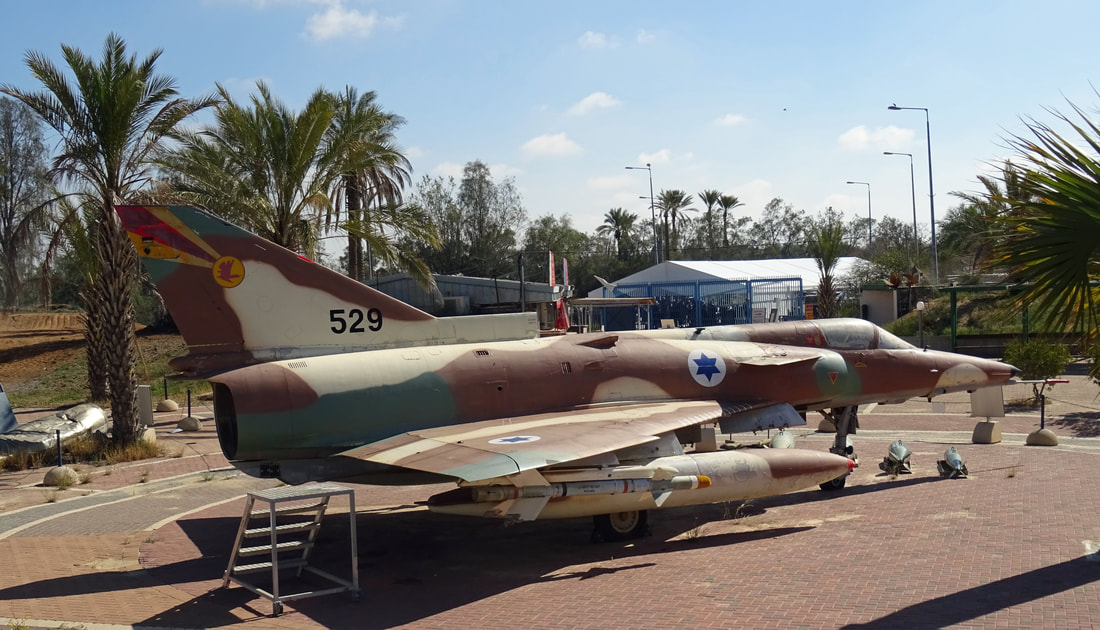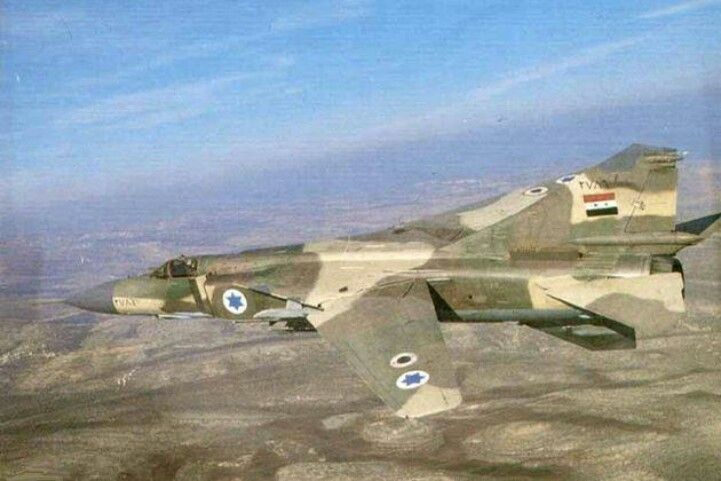StealthFlanker
New Member
- Joined
- Aug 12, 2016
- Messages
- 879
- Likes
- 1,213
Firstly, you don't need an infrared detector to engage target from BVR, F-15, F-16, F-18, F-22, Mirage didn't have an infrared detector and they were just fine. And keep in mind that TP-23M and TP-26 are not the same as the current IRST system on modern fighter, they are not imaging infrared system,Tell what is the use of having a better radar when you have no infrared detectors and BVR missiles?
Pretty much your explanation has no sense since the F-16 fires AIM-9Ls of shorter ranges than R-24s, tell me how do you jam a IRST?
To detect air targets, a TP-23M or TP-26 heat direction finder is also used (it has a maximum detection range of jet aircraft in the rear hemisphere against a background of free space of up to 60 km). The heat direction finder allows you to quietly get close to the enemy at a distance of launching missiles from the TGS. It has the following modes of operation: T-I - target designation of missiles R-60, R-23T, R-24T and K-13M in the range of 60 ° in azimuth and 15 ° in elevation; TI - due to the narrowing of the viewing sector to +/- 7 ° in azimuth and +/- 3 ° in elevation increases the image scale; T-III - the main mode, used for auto tracking of targets maneuvering with angular speeds of 6-8 ° / s. Information from the radar and the heat detector, including the reticle for cannon fire, is output to the ILS.
As you can see MiG-23MLD could fire R-24T and R-23Ts of longer ranges than AIM-9L.
Secondly, even without a BVR missile, having greater detection range mean you can coordinate your squadron to flank enemy or climb, accelerate to increase the range of your own missiles. And while R-24 have longer kinematic range than AIM-9L, the SARH version still need a radar lock to be launched and that is easily denied by the combination of low RCS, low altitude flight and jamming from F-16 side. By contrast, IR version need the seeker to lock on target before they leave the rail which eliminates much of the range advantage. Additionally, Leon van Maurer (the so called F-16 pilot) didn't said Mig-23 has an advantage in having longer range missile, he claimed Mg-23MLD has more powerful radar than F-16A, which easily prove to be nonsense.
Thirdly, the TP-26Sh-1 range that I gave earlier came from Soviet Aide-Memoire for the MiG-23MLD Pilot on Air Combat vs F-15A, F-I6A, F-4E and Kfir C.2 manual and I would think the Soviet know the performance of their own equipment more than some random internet site and logically speaking pilot manual is as accurate as it could get.
While I can't jam an IRST, the performance of TP-26Sh-1 is not enough for it to be a significant threat, 11-25 km against target in tail aspect and only if that target is in afterburner? without afterburner that range easily reduced by 70% when AB is off and another 70% if target viewed from frontal aspect.
But for the sake of argument, let pretend TP-26Sh-1 did indeed have 60 km detection range against tail aspect target which bring it to the level of OLS-UE installed on Mig-35.
We can't forget that IRST can't measure range and target velocity themselves, they have to rely on laser range finder or radar for that. Without range and speed, there is no firing solution for BVR combat. The much more modern OLS-UE can detect a Su-30 from 60 km in the rear aspect and only 15 km from the frontal aspect and its laser range finder is only 15 km. But wait, there is worse news, TP-26Sh-1 on Mig-23MLD doesn't have a laser finder range system so it still has to rely on Sapfir23 MLA to measure range and target velocity, if Sapfir23 MLA is jammed then too bad no BVR combat. The later Mig-27 has a laser range finder system but they have to get rid of the radar to install that
Yes I have, and If you scroll up, I already mentioned thatHave you thought F100 on F-16 has to rely on a fixed pitot tube type intake?
While R-35 can be fed by a Variable geometry multishock intake?
Well, it is more due to Rule of engagement and Identifies friend or foe problems. F-15 were the only aircraft of that time that have Non-Co-operative Target Recognition mode in its radar, this mode give F-15 ability to identifies target types through their jet engine modulation.in The 1980s and Gulf war in January 1991, F-16s used AIM-9s.
In fact if you were so right about the advertised capabilities of the F-16 radar, the 1991 kills by the americans were made by F-15s, no F-16s not even the vaunted F-14 could get the kill ratio of F-15, but F-16 did not down a single enemy fighter.
after 1992 F-16 were adapted to fire AIM-120, but the reality they always were fed information by AWACs and Iraq could not update nor operate its air force with the help of the USSR.
In 1982, E-2s were feeding information to the F-16.
I don't see any issue with AWACS feeding information to F-16, while F-16 radar is more powerful than Mig-23 radar, it is still no where comparable to AWACS's radar and it won't give 360 degree view of the battlespace.
I don't see the relevancy here, just because F-16 has better agility and radar than Mig-23 mld, doesn't mean it will be immune to SAM also. And there were very limited number of F-16 equipped with HARMs, about 13 if I remember correctly. And frankly, I can search up these F-16 losses quite easily so I don't see how "Americans never give credit to the enemy" is justifiedSo tell me if F-16 was so good with AIM-9L why the americans lost 7 in Iraq in 1991 these is according to american data, Iraqi data said close to 20 F-16 were downed by Iraq and they claimed a F-16 downed by a R-24 launched by a MiG-23!
remember the americans never give credit to claims of their enemies, but as you can see, they lost fighters and we have proof of that simply because their pilots were paraded by Saddam Hussain
No, Mig-23ML does not have superior acceleration characteristics to F-16CAs Interavia magazine wrote: “... This conclusion was reached by Israeli specialists after testing the Syrian MiG-23ML, which in 1989 hijacked a Syrian pilot, Major Abdul Bassem, into Israel. In the course of research, it was found, in particular, that the MiG-23ML is superior in acceleration characteristics to the F-16C
We can easily look into Mig-23UB (trainer) and Mig-23ML flight manual for references:
Here is the acceleration chart of Mig-23 UB and Mig-23ML at different altitude and sweep setting
The first chart is with 16° sweep
the second chart is with 45° sweep
and the third chart is with 72° sweep
The 16° sweep wing setting will give highest CL which is good for slow turning and take off, but also highest Cd, which is bad for accelerating due to high drag.
The 72° sweep wing setting ill give lowest CL so it is terrible for turning but it will give the lowest Cd, so it is the best setting for acceleration
The solid line represents MiG-23ML (single seat fighter) and the dotted line represent Mig-23UB (twin seat trainer)
So for the sake of simplification, I will only analyze the acceleration chart of Mig-23ML (the faster of the two) in 72° sweep setting (lowest drag)
MiG-23ML (Single seat fighter)
• Fuel = 2000 litres
• Engine R-35F-300 Turbojet
• SL Static Thrust @ Max AB 28,660 lbs (13,000kgf)
• Stores = 2 x R-23
• Total Weight =~26,809 lbs
So as we can see from the chart (look at the line marked with blue circles):
Mig-23ML armed with 2 R-23 at 1 km altitude, in max afterburner will take 35 seconds to accelerate from 600 km/h (Mach 0.49) to 1350 km/h (Mach 1.12)
For comparison, at sea level F-16 armed with 2 AIM-120 at wing tip (drag index =0), in max afterburner will take 25 seconds to accelerate from Mach 0.53 to Mach 1.13
But of course, now the argument is that Mig-23 is designed to have better acceleration at altitude, ok let move up, look at the line marked with 2 red circles:
Mig-23ML armed with 2 R-23 at 10 km (32.000 feet) altitude , in max afterburner , will take 120 seconds to accelerate from 600 km/h (Mach 0.55) to 1350 km/h (Mach 1.237)
R-23 is bigger than AIM-120, so to make it somewhat fairer, let make F-16 carry 6 AIM-120.
AIM-120 at wing tip has drag index = 0, AIM-120 and launcher at station 2-3-7-8 have drag index =4 each.
So the total of 6 AIM-120 on F-16 will have drag index of 16, still not enough? let make it carry a centerline fuel tank as well, the total drag index now is 34.
Let check with the manual:
F-16C armed with 6 AIM-120 and 1 centerline external fuel tank, at 30.000 feet altitude , in max afterburner, will take 68 seconds to accelerate from Mach 0.54 to Mach 1.25. With only 2 AIM-120, it will take 59 seconds. In other words, when carried similar load, F-16C takes about half the time to accelerate the same speed range. When carrying 4 more missiles and 1 extra centerline tank, F-16C still accelerate 76% faster than Mig-23ML
Does that look like Mig-23ML have superior acceleration characteristics? I don't think so.




